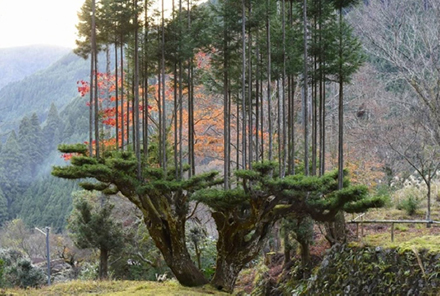Sometime in 15th century Japan, a horticulture technique called daisugi was developed in Kyoto. Written as 台杉 and literally meaning platform cedar, the technique resulted in a tree that resembled an open palm with multiple trees growing out if it, perfectly vertical. Sources: Spoon & Tamago, Kottke
Pictured is a daisugi in Kyoto’s Kitayama district and is perhaps the most famous example in all of Japan.
The technique was developed in Kyoto as a means of solving a seedling shortage and was used to create a sustainable harvest of timber from a single tree.
Done right, the technique can prevent deforestation and result in perfectly round and straight timber known as taruki, which are used in the roofs of Japanese teahouses. Smaller, decorative daisugi also exist around Japan but maintaining them can be expensive and time-consuming.
The technique is not really used in forestry anymore, but daisugi are popular as garden trees and bonsai.








